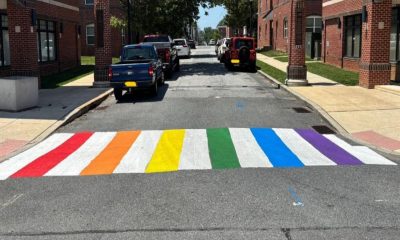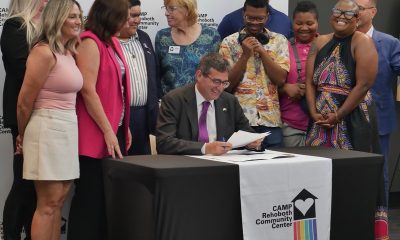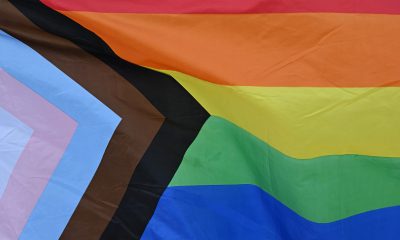National
Delaware Senate passes civil unions bill

The Delaware Senate voted 13-6 on Thursday to approve a civil unions bill that would provide same-sex couples with all of the rights and benefits of marriage under state law.
LGBT activists were optimistic that the Delaware House of Representatives would approve the bill next week, and the state’s governor, Democrat Jack A. Markell, has said he plans to sign the bill.
“We are delighted that not only did the civil unions bill get passed by the Senate but that it got passed by a two-to-one margin,” said Lisa Goodman, president of Equality Delaware, a state LGBT group coordinating lobbying efforts for the bill.
“We think that says a lot about what the citizens of Delaware want to see, that the citizens of Delaware are two-to-one in favor of civil unions,” she said.
Joe Solmonese, president of the Human Rights Campaign, called on the Delaware House to quickly pass the bill and send it to the governor for signing.
“Today we applaud the Delaware Senate for valuing all Delaware families,” Solmonese said.
A public opinion poll commissioned by Equality Delaware and conducted in March by the survey research firm Lake Research Partners found that 62 percent of voters favor allowing same-sex couples to form legalized civil unions, with 31 percent opposing such a law. Seven percent of the voters polled were undecided. The poll had a margin of error of plus or minus 3.8 percent.
“We feel very optimistic about getting the bill through the House,” Goodman said. “We have all three of the Democratic leaders in the House on the bill as sponsors and we’ve been working very hard with House members.”
Democrats hold a 26 to 15 majority in the 41-member Delaware House of Representatives.
A House hearing on the bill was expected to be held April 13, with the committee expected to approve the bill the same day. Goodman said a debate and vote on the bill in the full House was expected to take place April 14.
Similar to civil unions laws in other states, the Delaware measure, Senate Bill 30, would provide same-sex couples with all of the rights, benefits and obligations of marriage under state law but would not provide any federal rights or benefits related to marriage.
The Defense of Marriage Act (DOMA), which Congress passed in 1996 and President Bill Clinton signed, bars same-sex couples from receiving federal marriage-related rights or benefits.
If the Delaware civil unions measure is approved by the legislature and signed by the governor, Delaware would become the eighth state to provide marriage-related rights and benefits to same-sex couples – either through either civil unions or comprehensive domestic partnership laws.
Two of the other states – Illinois and Hawaii – approved such laws earlier this year. The Illinois law is scheduled to take effect in June and the Hawaii law goes into effect in January 2012.
New York
Two teens shot steps from Stonewall Inn after NYC Pride parade
One of the victims remains in critical condition
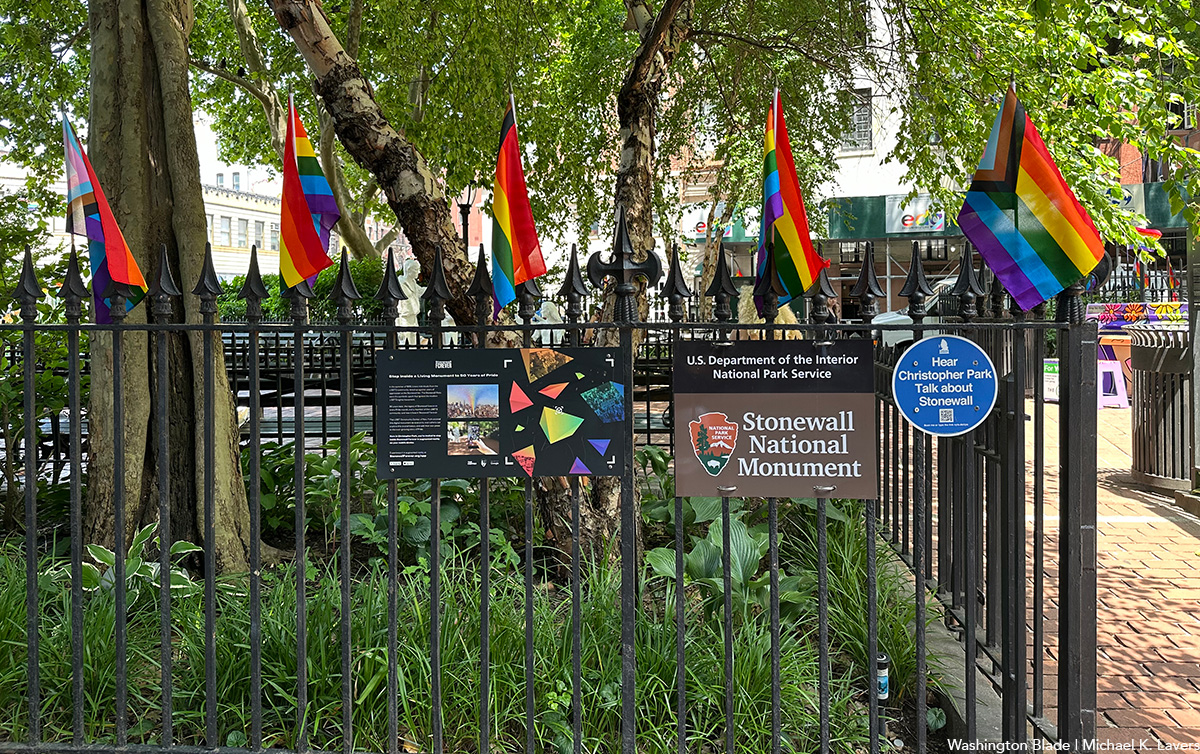
On Sunday night, following the annual NYC Pride March, two girls were shot in Sheridan Square, feet away from the historic Stonewall Inn.
According to an NYPD report, the two girls, aged 16 and 17, were shot around 10:15 p.m. as Pride festivities began to wind down. The 16-year-old was struck in the head and, according to police sources, is said to be in critical condition, while the 17-year-old was said to be in stable condition.
The Washington Blade confirmed with the NYPD the details from the police reports and learned no arrests had been made as of noon Monday.
The shooting took place in the Greenwich Village neighborhood of Manhattan, mere feet away from the most famous gay bar in the city — if not the world — the Stonewall Inn. Earlier that day, hundreds of thousands of people marched down Christopher Street to celebrate 55 years of LGBTQ people standing up for their rights.
In June 1969, after police raided the Stonewall Inn, members of the LGBTQ community pushed back, sparking what became known as the Stonewall riots. Over the course of two days, LGBTQ New Yorkers protested the discriminatory policing of queer spaces across the city and mobilized to speak out — and throw bottles if need be — at officers attempting to suppress their existence.
The following year, LGBTQ people returned to the Stonewall Inn and marched through the same streets where queer New Yorkers had been arrested, marking the first “Gay Pride March” in history and declaring that LGBTQ people were not going anywhere.
New York State Assemblywoman Deborah Glick, whose district includes Greenwich Village, took to social media to comment on the shooting.
“After decades of peaceful Pride celebrations — this year gun fire and two people shot near the Stonewall Inn is a reminder that gun violence is everywhere,” the lesbian lawmaker said on X. “Guns are a problem despite the NRA BS.”
New York
Zohran Mamdani participates in NYC Pride parade
Mayoral candidate has detailed LGBTQ rights platform

Zohran Mamdani, the candidate for mayor of New York City who pulled a surprise victory in the primary contest last week, walked in the city’s Pride parade on Sunday.
The Democratic Socialist and New York State Assembly member published photos on social media with New York Attorney General Letitia James, telling followers it was “a joy to march in NYC Pride with the people’s champ” and to “see so many friends on this gorgeous day.”
“Happy Pride NYC,” he wrote, adding a rainbow emoji.
Mamdani’s platform includes a detailed plan for LGBTQ people who “across the United States are facing an increasingly hostile political environment.”
His campaign website explains: “New York City must be a refuge for LGBTQIA+ people, but private institutions in our own city have already started capitulating to Trump’s assault on trans rights.
“Meanwhile, the cost of living crisis confronting working class people across the city hits the LGBTQIA+ community particularly hard, with higher rates of unemployment and homelessness than the rest of the city.”
“The Mamdani administration will protect LGBTQIA+ New Yorkers by expanding and protecting gender-affirming care citywide, making NYC an LGBTQIA+ sanctuary city, and creating the Office of LGBTQIA+ Affairs.”
U.S. Supreme Court
Supreme Court upholds ACA rule that makes PrEP, other preventative care free
Liberal justices joined three conservatives in majority opinion
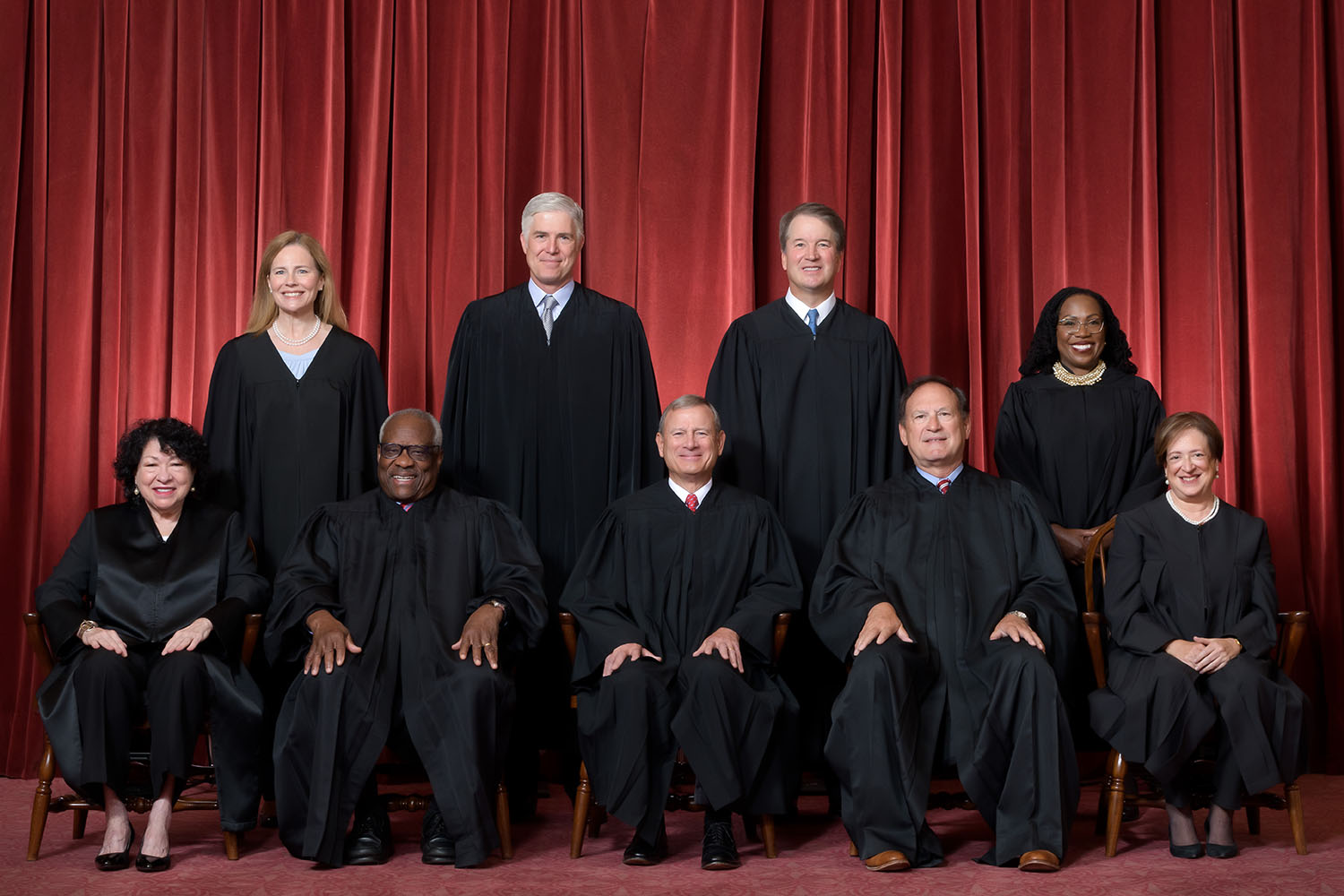
The U.S. Supreme Court on Friday upheld a portion of the Affordable Care Act requiring private health insurers to cover the cost of preventative care including PrEP, which significantly reduces the risk of transmitting HIV.
Conservative Justice Brett Kavanaugh authored the majority opinion in the case, Kennedy v. Braidwood Management. He was joined by two conservatives, Chief Justice John Roberts and Justice Amy Coney Barrett, along with the three liberal justices, Sonia Sotomayor, Elena Kagan, and Ketanji Brown-Jackson.
The court’s decision rejected the plaintiffs’ challenge to the Affordable Care Act’s reliance on the U.S. Preventative Services Task Force to “unilaterally” determine which types of care and services must be covered by payors without cost-sharing.
An independent all-volunteer panel of nationally recognized experts in prevention and primary care, the 16 task force members are selected by the secretary of the U.S. Department of Health and Human Services to serve four-year terms.
They are responsible for evaluating the efficacy of counseling, screenings for diseases like cancer and diabetes, and preventative medicines — like Truvada for PrEP, drugs to reduce heart disease and strokes, and eye ointment for newborns to prevent infections.
Parties bringing the challenge objected especially to the mandatory coverage of PrEP, with some arguing the drugs would “encourage and facilitate homosexual behavior” against their religious beliefs.
-

 U.S. Supreme Court3 days ago
U.S. Supreme Court3 days agoSupreme Court upholds ACA rule that makes PrEP, other preventative care free
-

 U.S. Supreme Court3 days ago
U.S. Supreme Court3 days agoSupreme Court rules parents must have option to opt children out of LGBTQ-specific lessons
-

 India5 days ago
India5 days agoIndian court rules a transgender woman is a woman
-

 National4 days ago
National4 days agoEvan Wolfson on the 10-year legacy of marriage equality

